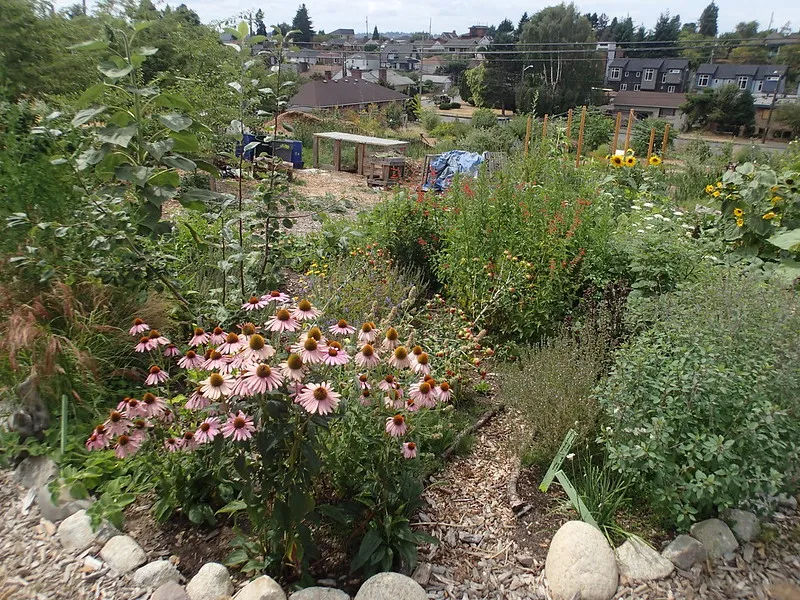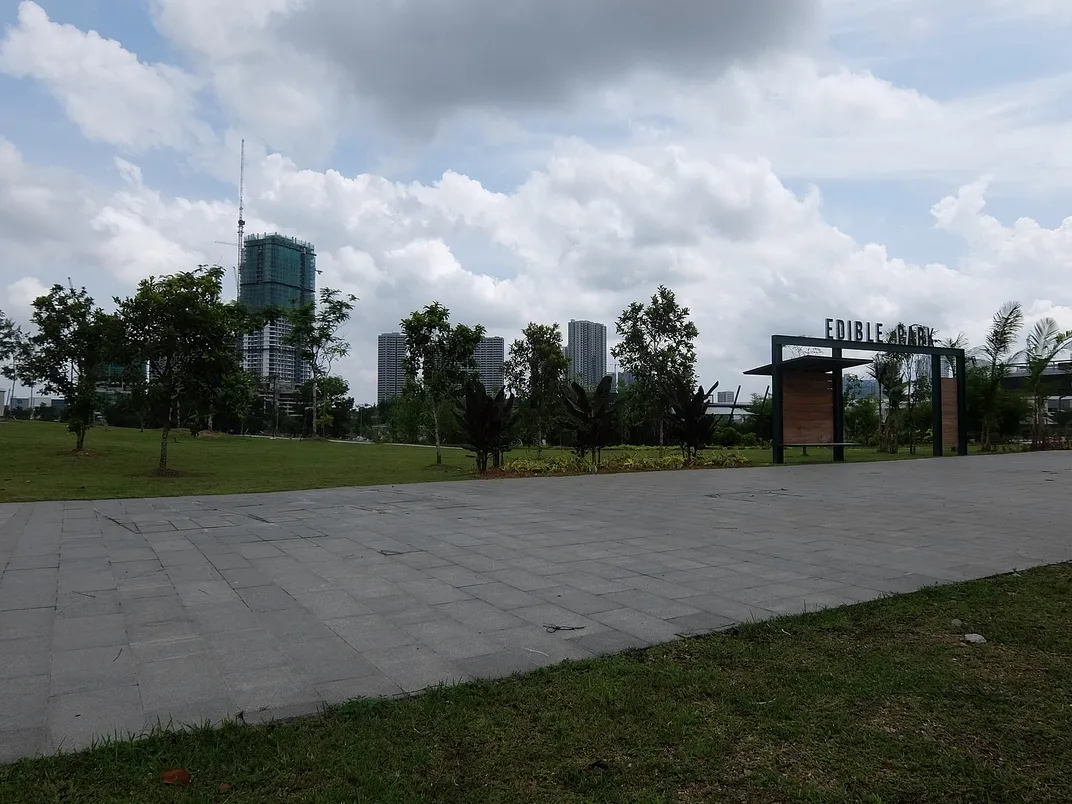Are ‘Edible Landscapes’ the Future of Public Parks?
Green spaces planted with fruits, veggies and herbs are sprouting across the globe, and the bounty is meant to share
/https://tf-cmsv2-smithsonianmag-media.s3.amazonaws.com/filer/4e/1a/4e1a8e8e-7ef9-477c-8b34-a9c3be80180f/lafayette_greens.jpg)
Imagine strolling through an urban public park, admiring the trees and flowers. Your stomach starts to rumble. You reach up and pluck a few greengage plums from the tree overhead, and munch them as you continue walking. Later, perhaps, you stop to help a group of volunteers dig up potatoes from the park’s root vegetable garden, to be placed in crates and cycled to the nearby food pantry.
Is this the park of the future?
A growing movement of gardeners, food activists, landscape designers, urban planners and others is encouraging us to think “edible” when it comes to public green space. Flowers are pretty, they say, but if those blossoms become apples or zucchini, isn’t that even better?
“Public food landscapes can transform public spaces from being passive scenes to view or experience at a relatively superficial level,” says Joshua Zeunert, a landscape designer and professor at the University of New South Wales in Sydney who studies edible public spaces.
By "public food landscape," Zeunert means food-producing land fully accessible to the public that is intended to be used for public benefit. This could include community vegetable gardens, public parks with “edible forests” of fruit and nut trees, public university campuses with agriculture projects that benefit the community and neighborhood centers with food-producing green roofs.

These types of spaces are not all new, Zeunert says. For example, the First and Second World Wars brought a brief fashion for community victory gardens, where parks were turned over to food production to aid the war effort. These tended to disappear when the fighting ended. But recent years have brought a wide variety of edible landscapes, from tiny curbside herb gardens to enormous urban agriculture projects.
In downtown Detroit, Lafayette Greens is an urban garden and public green space where visitors can watch live music, enjoy local art installations, and take community yoga classes, all while watching butterflies flit from plant to plant. The garden focuses on flowering plants and pollinating insects; rows of fragrant lavender waving in the breeze bring tranquility to tired shoppers and workers on their lunch breaks. All this fits into less than half an acre. Volunteers can take produce home; the rest goes to local food banks.
In Chicago, the Gary Comer Youth Center has a 24-inch layer of dirt on the roof, irrigated by collected rainwater. In this rich soil, students from the youth horticultural program tend fruits and vegetables, which are used for culinary classes inside the center, and served in the cafeteria. The 8,000-plus square foot garden produces more than 1,000 pounds of cabbage, carrots, lettuce, strawberries, and more every year. It also absorbs stormwater and cools off the building, reducing energy costs. The campus is open to members and volunteers, though all programs have been online due to the pandemic.
Across the country, "food forests" are rising from urban soil. Atlanta City Council recently planted fruit and nut trees on seven acres in the city, the bounty of which will be available free to local residents. It's part of a project to ensure that 85 percent of Atlanta residents are within half a mile of fresh food by next year. In Seattle, volunteers transformed seven acres of grass next to a busy road into the Beacon Food Forest, which includes a "giving garden" of produce for donation, learning space and an orchard of fruit trees. In Los Angeles, an artists collective called Fallen Fruit plants fruit trees in urban spaces, with the idea that they be nurtured and harvested by the public. In Asheville, North Carolina, the George Washington Carver Edible Park is the oldest of the bunch, a multi-layered canopy of fruit and nut trees along with edible ground cover like strawberry plants, all free for the picking.

Edible landscapes are not just an American phenomenon. At Shenyang University Architectural Campus in northern China’s Liaoning Province, rice for the cafeteria is grown in the school’s very own rice paddy, which serves as a training grounds for budding architects and landscape designers. The paddy’s “Golden Rice” is also given away in bags to campus visitors, raising awareness of how seemingly non-agricultural spaces can help produce food.
Amidst the urban jungle of the Malaysian city of Iskandar Puteri, Edible Park is a five-acre oasis of fruit trees, vegetables and herbs. Visitors can drop by to take organic cooking classes or purchase produce —local specialties include yams, hibiscus blossoms and a variety of wild greens known collectively as ulam, the base of a popular type of salad.
“Eating local strengthens the entire community, and not just the food supply system,” Edible Park founder Chris Parry told the Malay Mail.
In the UK market town of Todmorden, a non-profit organization called Incredible Edible Todmorden plants fruit trees and herb and vegetable gardens all over the community, free for anyone who wants to harvest. Commuters can grab a sprig of cooking herbs from the planter on the train platform, while those with upset stomachs can pick some tummy-soothing fennel from the apothecary garden next to the town health center.
And across the channel in France, the city of Le Havre has created an enormous fruit, vegetable and herb garden in front of city hall. Leeks are ready to harvest this month; earlier in the year, offerings included strawberries, sage, radishes, raspberries, pumpkins and zucchini. The idea was inspired by the coronavirus, when lockdown meant workers couldn’t cultivate the 90,000 ornamental plants that usually grace the city’s streets. So town officials decided to make the best of a bad situation and turn to urban agriculture. Produce is free for all; tiny signs in the dirt say things like “I am ripe” or “wait a bit” so non-gardeners will know when to pick the bounty.
“I think Covid has made people more aware of our utter dependency on our farmers, food retailers and the at-times mind-boggling supply chains and processes required to keep these operational,” Zeunert says.
With interest in gardening soaring during the pandemic, edible landscapes will no doubt have plenty of volunteers to help maintain them in the future.
/https://tf-cmsv2-smithsonianmag-media.s3.amazonaws.com/accounts/headshot/matchar.png)
/https://tf-cmsv2-smithsonianmag-media.s3.amazonaws.com/accounts/headshot/matchar.png)